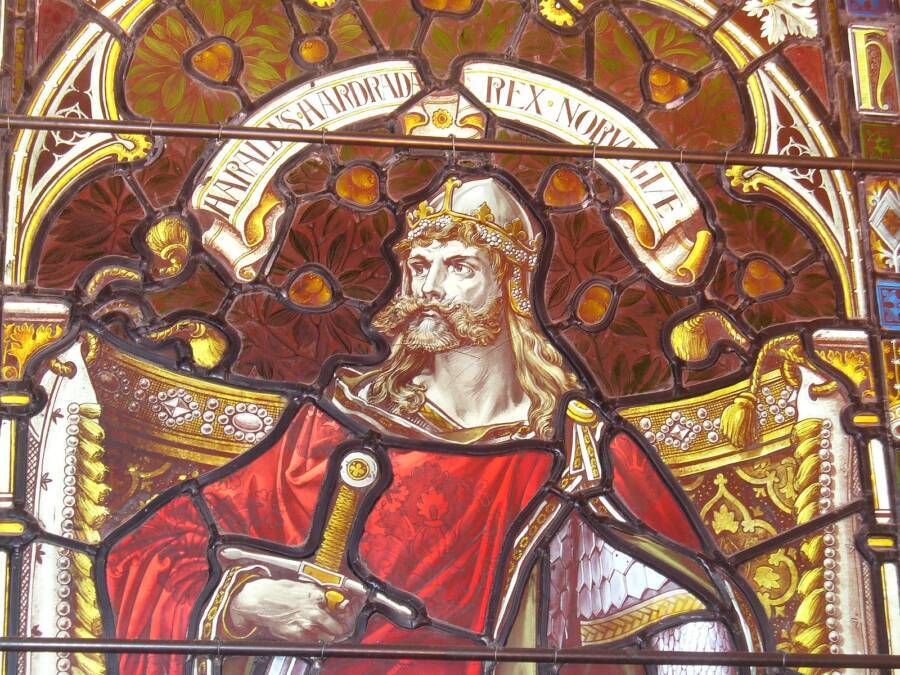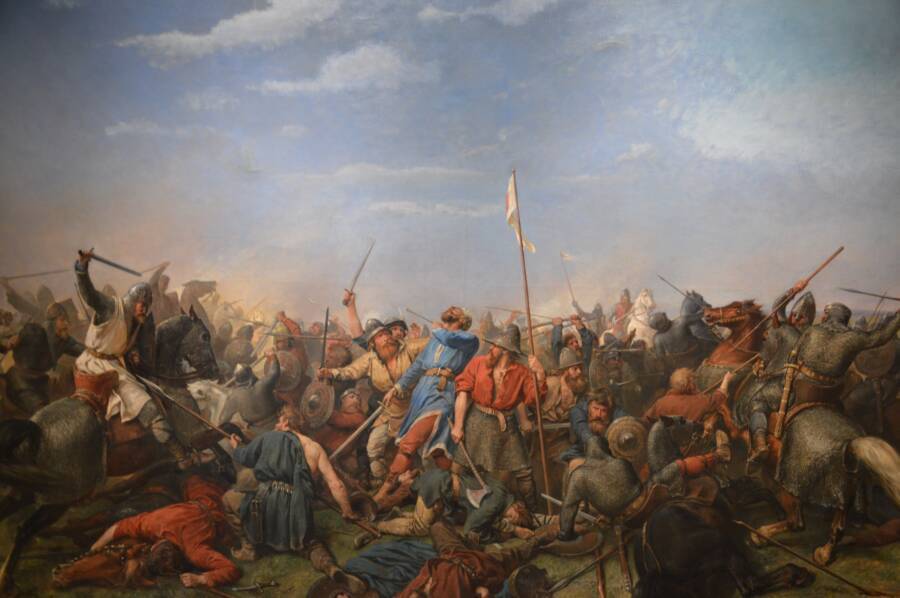Harald Hardrada, The Last Viking King

Wikimedia CommonsHarald Hardrada’s death marked the end of the Viking Age.
Harald Hardrada, born Harald Sigurdsson in 1015 in Ringerike, Norway, became known as “the last Viking” after his death in battle in 1066 signaled the end of the Viking Age. His name translates to “hard ruler” or “resolute,” and he proved himself a trustworthy leader with courage in battles that took him from Norway to Russia, Iraq, Jerusalem, and Sicily.
At just 15 years old, Hardrada joined his half-brother, Olaf Haraldsson, in a bloody struggle to regain power after Olaf had been toppled and exiled by Cnut the Great of Denmark. When Olaf fell at the Battle of Stiklestad in 1030, Hardrada was severely injured and fled to Russia, where Grand Prince Yaroslav the Wise welcomed him in 1031.
After serving in Yaroslav’s army for two years, Hardrada traveled to Constantinople in August 1034 and joined the Varangian Guard, an elite force of Norse warriors who protected the Byzantine emperor. He spent nearly a decade in the guard, fighting pirates in the Mediterranean Sea and Arab forces in the Parthian Empire, traveling as far east as the Tigris and Euphrates, and as far west as Sicily.

Wikimedia CommonsThe Battle of Stamford Bridge by Peter Nicolai Arbo (1870).
During this time, he amassed considerable fortunes, though he grew impatient at the lack of promotion and eventually fell out of favor after Emperor Michael IV died in December 1041.
Returning to Russia in 1042, Hardrada married Yaroslav’s daughter Elisabeth and then headed home to Norway. By 1047, after his nephew Magnus died, Hardrada became the sole King of Norway and believed he had a claim to the English throne as well.
In 1066, when English nobleman Harold Godwinson took the throne after King Edward’s death, Hardrada launched an invasion of England with nearly 10,000 men on hundreds of Viking ships. However, on September 25, he was caught off-guard at the Battle of Stamford Bridge and killed.
Just three weeks later, Godwinson himself was defeated by William the Conqueror, changing the course of English history forever.
After learning about these famous Vikings, read about some of history’s most famous pirates. Then, read about some of the most fearsome Roman gladiators.





